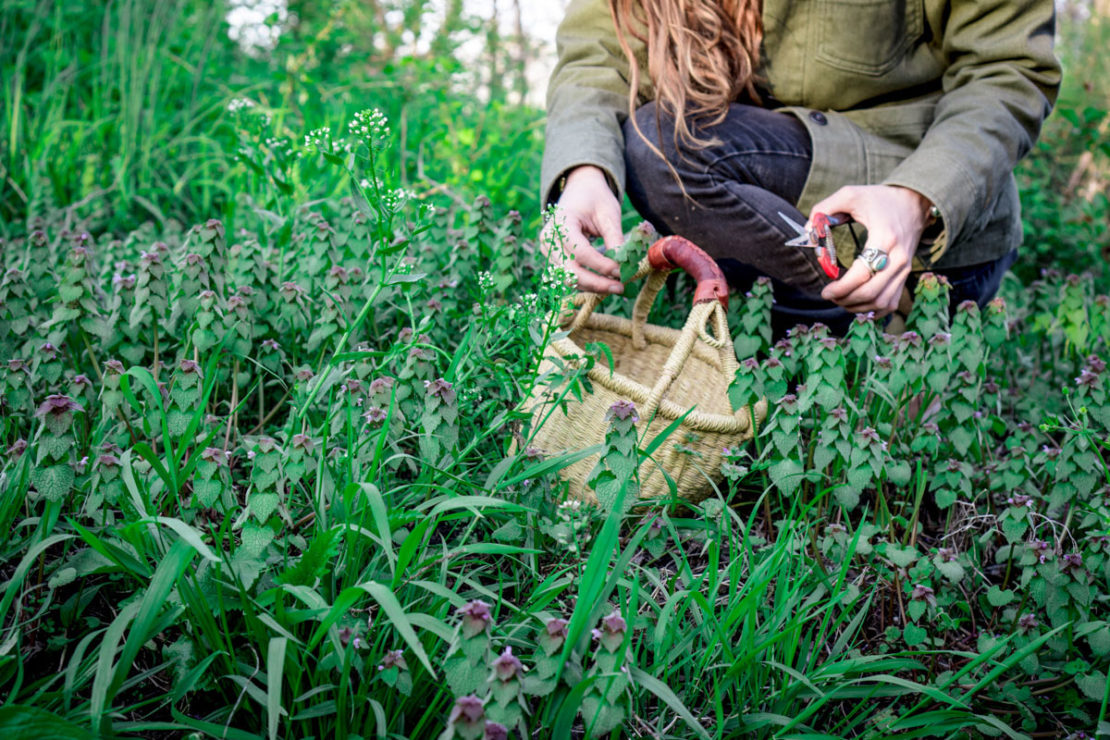
Purple Dead Nettle: Nutrition and Recipes
If you enjoy foraging and using plants that grow naturally around you, then purple dead nettle (Lamium purpureum) is a wonderful plant to become acquainted with. Available across most of the United States, this common “weed” is easy to find and its mild flavor blends well with a wide variety of recipes—from salads and smoothies to stir-fries and soups.
One of the characteristics that sets wild edibles apart from cultivated foods is their nutrient density; they tend to contain more beneficial nutrients like vitamins and minerals on a per-weight basis than cultivated foods (Milburn, 2004). This is attributed to a variety of causes. First, cultivated foods like vegetables have been selected for many generations for their size and hardiness rather than their nutritional value.
All cultivated foods originated as wild plants, and over the long history of agriculture, which was likely developed around 12,000 years ago (Uekoetter, 2010), humans have saved seeds and hybridized plants to genetically select larger, easy-to-grow varieties. Such plants make for greater crop yields, but tend to contain fewer nutrients than their wild counterparts (Davis et al., 2004).
This fascinating history provides us with all the more reason to enjoy a heaping plate of wild spring greens!
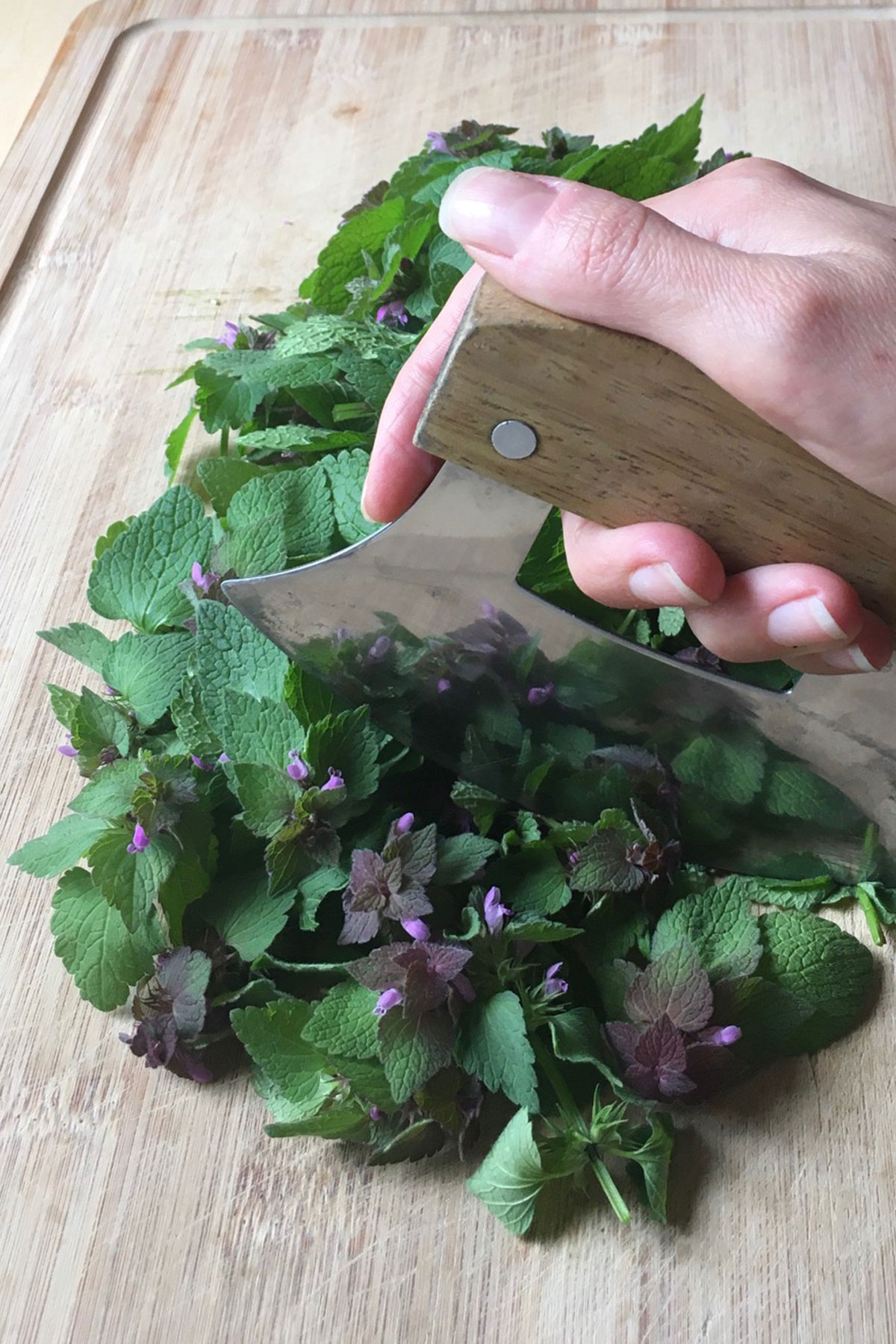
Dead nettle – Lamium purpureum (Lamiaceae) – Aerial parts
Known variously as red or purple dead nettle and purple archangel, L. purpureum is native to Europe, North Africa, and Siberia. It has naturalized in much of the United States, as well as Canada, Greenland, and Iceland (Royal Botanic Gardens of Kew, n.d.b.). White dead nettle (L. album), native throughout Europe and Asia (RBGK, n.d.a.), is the most commonly referenced Lamium species in herbal literature, although the two species have traditionally been used similarly (Grieve, 1931/1971). Dead nettle can be found in lawns and disturbed soils and is a common garden weed (Deer, 2016).
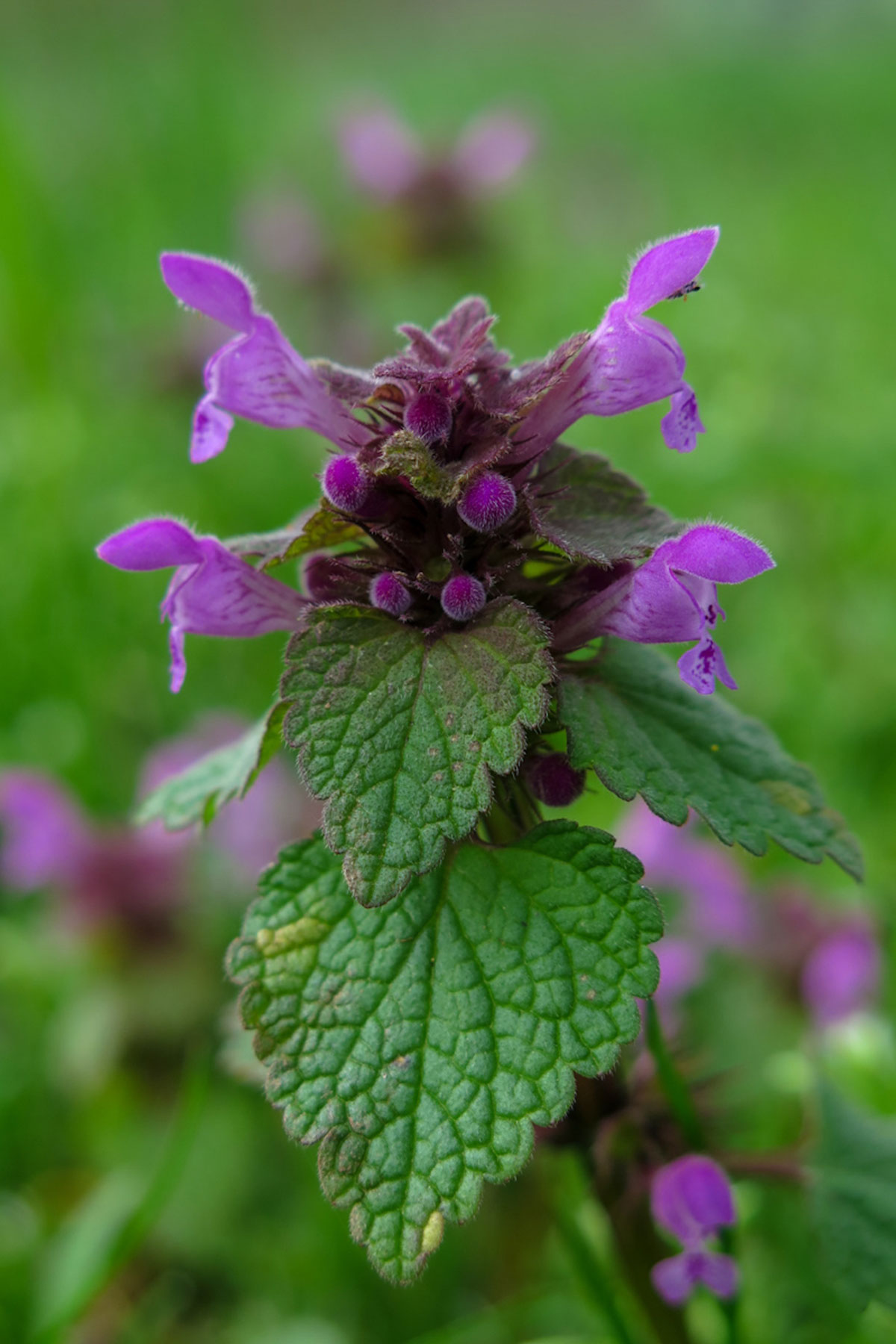
Botanical description: Like almost all members of the Lamiaceae (mint) family, dead nettle has square stems and opposite leaves. Dead nettle grows up to 45 cm tall (Steckel, n.d.), and has dark green to purplish ovate leaves with crenate margins (margins with rounded teeth) (New York Botanical Garden, n.d.). Leaves grow up to 2½ cm long (Steckel, n.d.); on the lower part of each stem the leaves are spaced widely apart, but they grow quite close together at the top of the stem, near the flower whorls. Each flower whorl has 6-10 pink or purple flowers, which technically have five petals, but these petals are fused together into a two-lipped tube approximately 5 mm long (Magee & Ahles, 1999).
Actions: Antihistamine, anti-inflammatory, antimicrobial, astringent, immunostimulating, nutritive, styptic
Energetics: Warming and drying
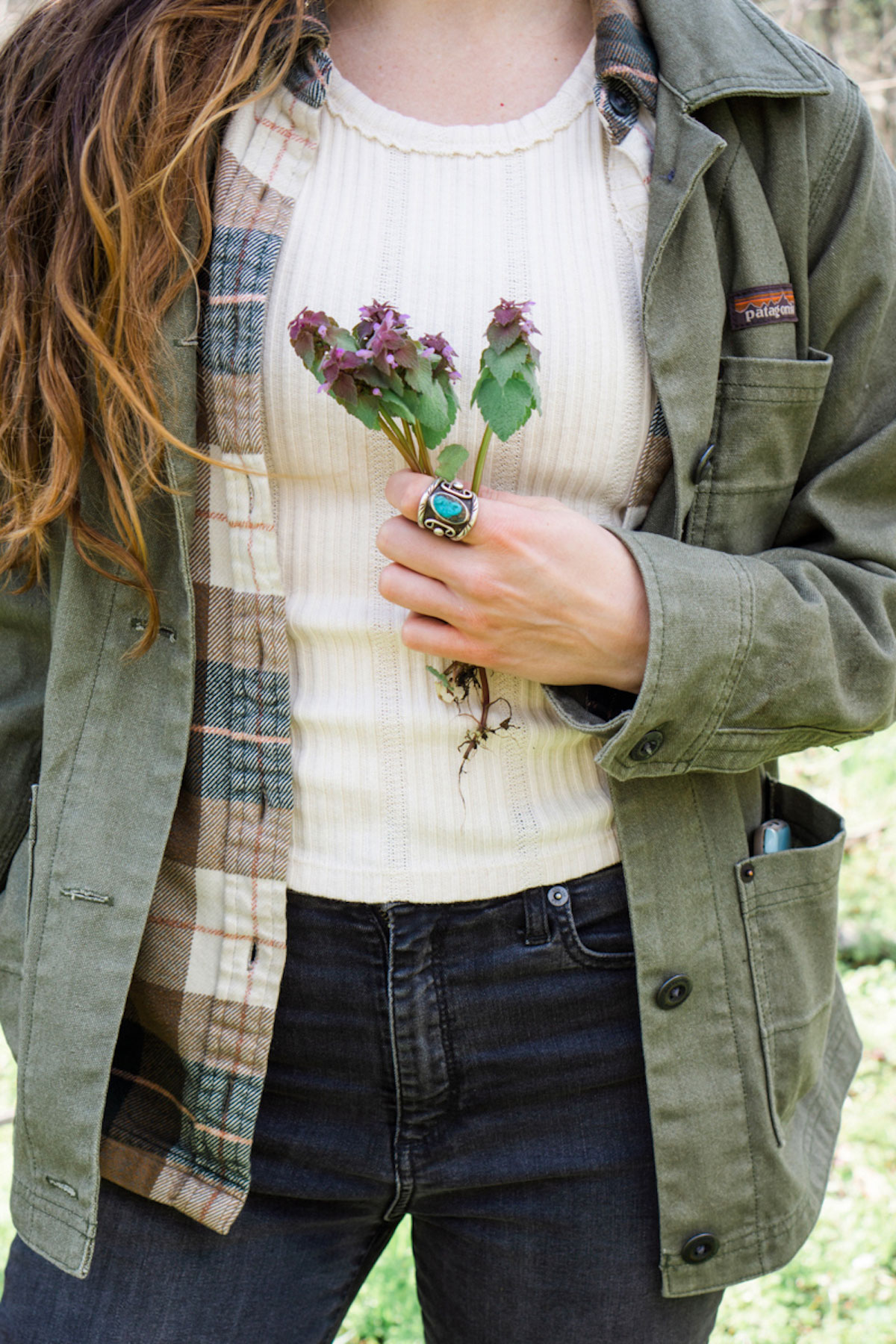
Use: One of the earliest spring greens available in the season, dead nettle is named for its leaves, which are similar in shape to stinging nettle (Urtica spp.), but are “dead” due to their lack of sting (Grieve, 1931/1971). The flowering tops can be finely chopped for inclusion in salads, smoothies, or cooked dishes like soups, sauces, egg dishes, and stir-fries. Dead nettle’s somewhat fluffy texture lends itself especially well to fritters (see recipe below!). The plant has an earthy odor that may be disagreeable to some but is dissipated upon cooking; the taste is fairly mild with slightly bitter undertones.
Purple dead nettle contains polyphenols—compounds with antioxidant properties (Vergun et al., 2019) that are associated with a broad range of health benefits, especially for the cardiovascular system (Fraga et al., 2010) and the gut microbiome (Cardona et al., 2013). It is also a source of quercetin, a flavonoid with immunostimulating and anti-inflammatory properties that is used to ease allergies and other chronic inflammatory issues like rheumatism (Deer, 2016). The plant’s volatile oil content has antimicrobial properties and may be helpful against candida overgrowth (Deer, 2016). Its astringent properties have traditionally been used to staunch bleeding (Grieve, 1931/1971), including excessive menstrual bleeding (Wood, 2008).
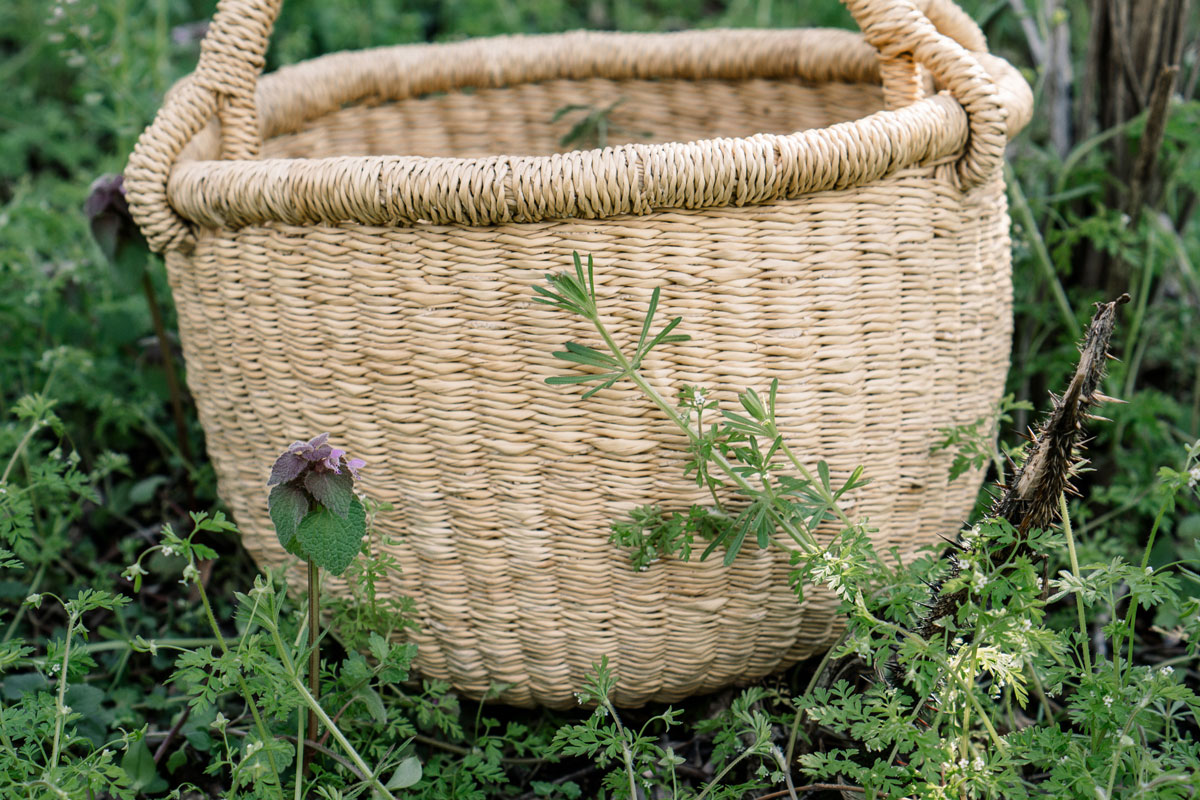
Harvesting and processing: Harvest the first 5-10 cm of the flowering tops in the early spring. Dead nettle is often confused with henbit (Lamium amplexicaule), another member of the Lamiaceae (mint) family that is low-growing with purple flowers; however, henbit is also edible!
Safety: There are no known contraindications, but those with excessive uterine bleeding should seek a physician’s care to rule out malignancy before using Lamium species as a hemostatic (Aleschewski, 2008).
Cooking with Dead Nettle
Knowing that dead nettle contains antioxidant, immunostimulating, and anti-inflammatory properties has us all the more excited to hit the fields, find an abundant patch, and then experiment with this lovely spring green in our kitchens!
The following recipes are from The Foraging Course, an in-depth, seasonal guide into the plants that grow around you and how to use them.
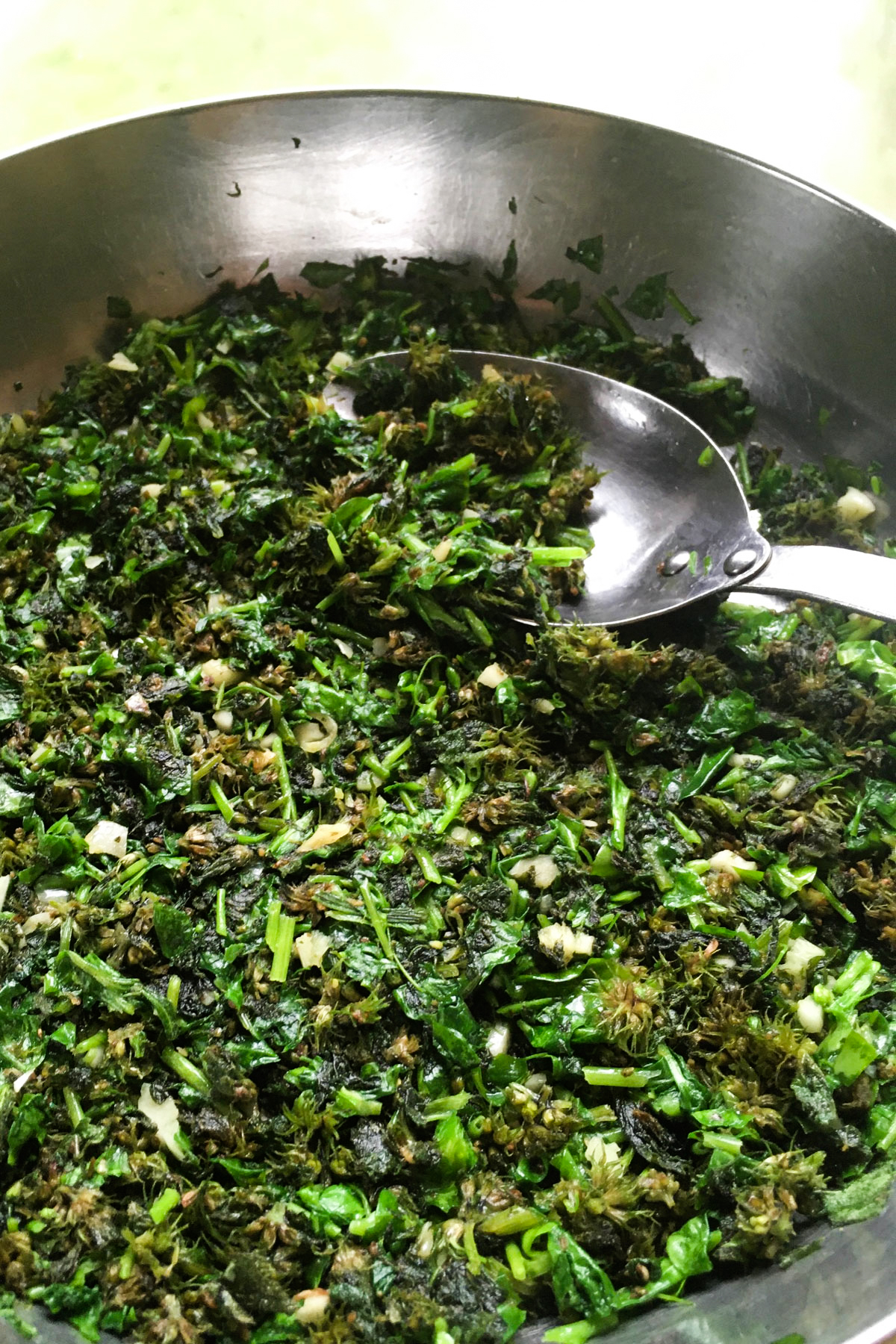
This savory fritter recipe makes use of the fluffy texture of dead nettle combined with chickweed, another early spring plant that can often be found growing nearby. These dark-green delights are surprisingly filling and make a great breakfast fritter, or they can be served as a side dish for other meals.
2 tbsp coconut oilDead Nettle and Chickweed Fritters
5 cups (2 oz) dead nettle (Lamium purpureum) flowering tops, finely chopped
2 cloves garlic, minced
3 cups (1.5 oz) chickweed (Stellaria media) aboveground parts, finely chopped
1 egg, whisked
Adapted from Hunter Gather Cook (Hunter Gather Cook, 2012).
This simple side dish combines the mild flavor of dead nettle with zingy wild mint.
1 tbsp butter or olive oilDead Nettle and Mint with Smoked Garlic
1 smoked garlic clove, finely chopped or grated
3 oz dead nettle (Lamium purpureum) flowering tops
15 wild mint (Mentha spp.) leaves
½ lime, juiced
Salt and pepper to taste
Dead nettle flowers, for garnish (optional)
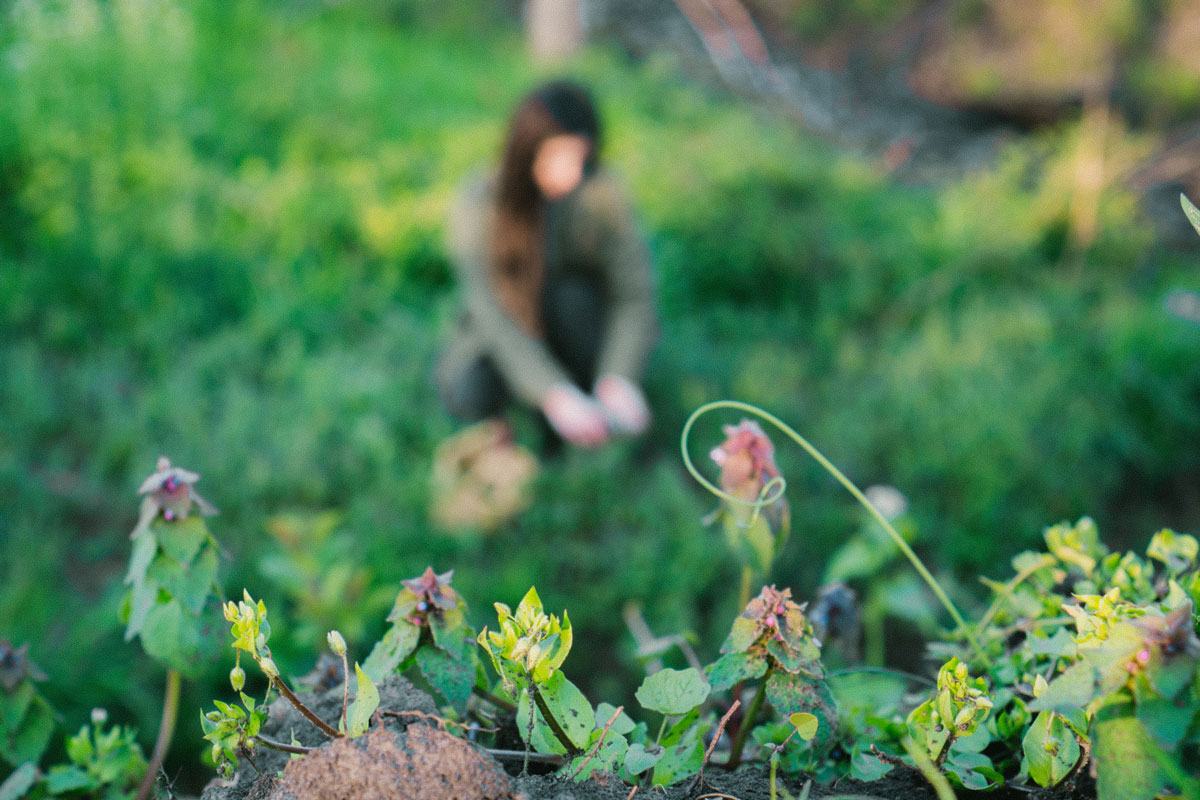
Join us in The Foraging Course to learn all about harvesting and using wild plants—from springtime beauties, such as nettle, violet, and chickweed to summertime treasures, like yarrow, mimosa, and mugwort—not to mention our fall favorites like burdock, yellow dock, and rosehip. With this in-depth, online guide, you will learn how to safely identify and harvest wild plants. You’ll also receive 24 in-depth plant monographs about common wild botanicals and 48 tested recipes for using your harvest both in your kitchen and in your apothecary.
Sign up for The Foraging Course today!
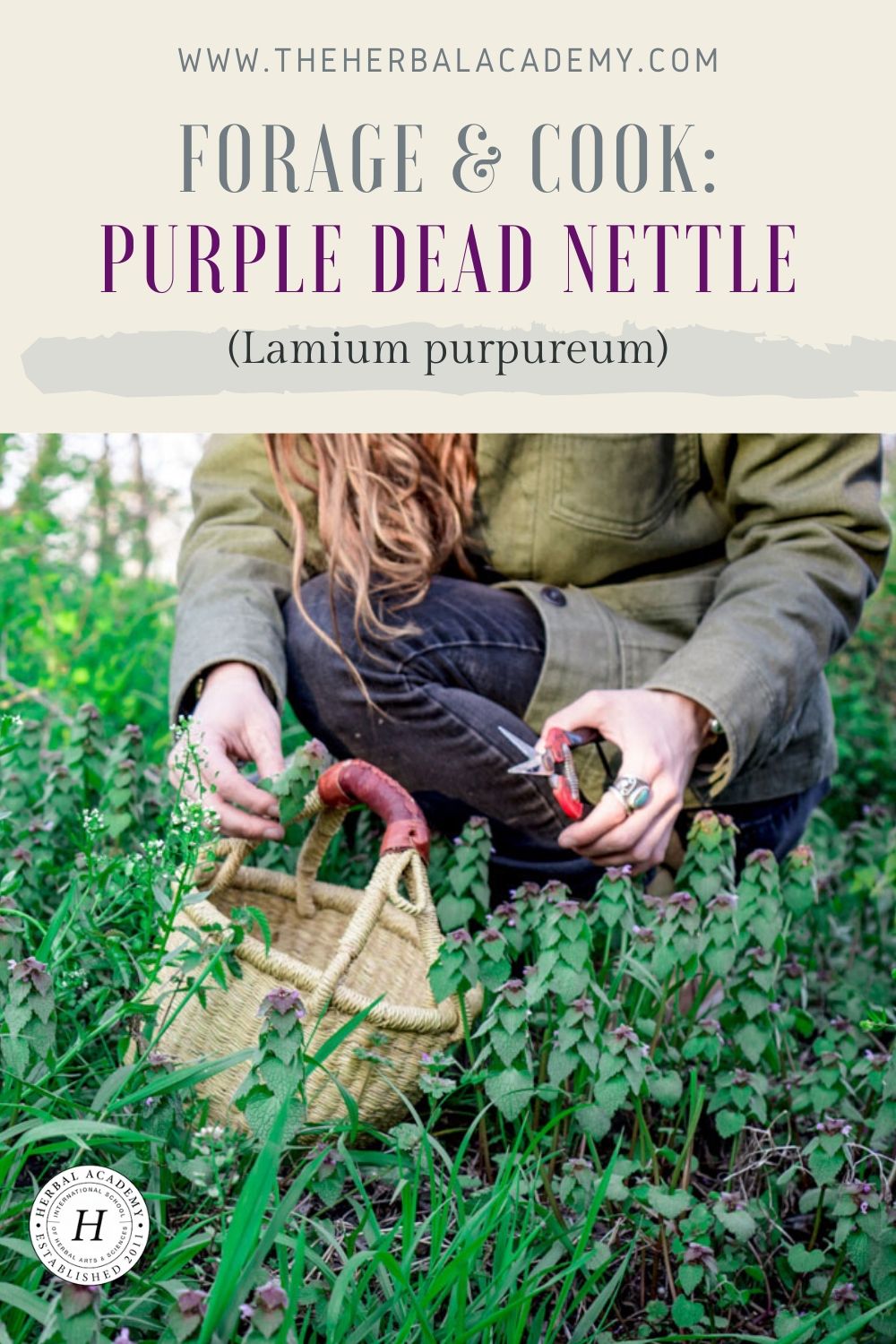
REFERENCES
Aleschewski, N. (Ed). (2008). Lamium album [Southern Cross University website]. Retrieved from https://www.scu.edu.au/southern-cross-plant-science/facilities/medicinal-plant-garden/monographs/lamium-album/
Cardona, F., Andrés-Lacueva, C., Tulipani, S., Tinahones, F., & Queipo-Orutño, M.I. (2013). Benefits of polyphenols on gut microbiota and implications in human health. The Journal of Nutritional Biochemistry, 24(8), 1415-1422. https://doi.org/10.1016/j.jnutbio.2013.05.001
Davis, D., Epp, M., & Riordan, H. (2004). Changes in USDA food composition data for 43 garden plants, 1950-1999. Journal of the American College of Nutrition, 23(6), 669-682. https://doi.org/10.1080/07315724.2004.10719409
Deer, T.S. (2016). Allergy sufferers get ahead with purple dead-nettle. Retrieved from https://wisdomoftheplantdevas.com/tag/medicinal-plants-2/
Fraga, C.G., Galleano, M., Verstraeten, S.V., & Oteiza, P.I. (2010). Basic biochemical mechanisms behind the health benefits of polyphenols. Molecular Aspects of Medicine, 31(6), 435-445. https://doi.org/10.1016/j.mam.2010.09.006
Grieve, M. (1971). A modern herbal (Vols. 1-2). New York, NY: Dover Publications. (Original work published 1931)
Hunter Gather Cook. (2012). Red dead-nettle: A spring side dish. Retrieved from https://huntergathercook.typepad.com/huntergathering_wild_fres/2012/04/red-dead-nettle-a-spring-side-dish.html
Magee, D.W., & Ahles, H.E. (1999). Flora of the Northeast. Amherst, MA: University of Massachusetts Press.
Milburn, M. (2004). Indigenous nutrition: Using traditional food knowledge to solve contemporary health problems. American Indian Quarterly, 28(3-4), 411-434. https://doi.org/10.1353/aiq.2004.0104
New York Botanical Garden. (n.d.). New York City EcoFlora: Lamium. Retrieved from https://www.nybg.org/content/uploads/2018/03/NYBGEcoQuest_2018_March_LookForLamium_MoreInformation.pdf
Royal Botanic Gardens of Kew. (n.d.a). Lamium album L. Plants of the world online [Database]. Retrieved from http://www.plantsoftheworldonline.org/taxon/urn:lsid:ipni.org:names:448792-1
Royal Botanic Gardens of Kew. (n.d.b). Lamium purpureum L. Plants of the world online [Database]. Retrieved from http://www.plantsoftheworldonline.org/taxon/urn:lsid:ipni.org:names:448939-1
Steckel, L. (n.d.). Purple dead nettle and henbit. University of Tennessee Extension. Retrieved from https://extension.tennessee.edu/publications/Documents/W165.pdf
Uekoetter, F. (Ed.) (2010). The turning points of environmental history. Pittsburgh, PA: University of PIttsburgh Press.
Vergun, O.M., Grygorieva, O.V., Brindza, J., Shymanska, O.V., Rakhmetov, D.B., Horčinová-Sedlačková, V., … Ivanišová, E. (2019). Content of phenolic compounds in plant raw of Cichorium intubus L., Lamium purpureum L. and Viscum album L. Plant Introduction, 84, 87-96. https://doi.org/10.5281/zenodo.3404149
Wood, M. (2008). The earthwise herbal: A complete guide to old world medicinal plants. Berkeley, CA: North Atlantic Books.







